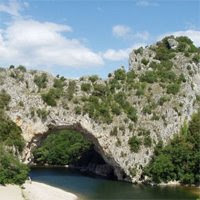Literature:
Albert Heim, 1931, Geologie des Rheinfalls.
Der Rheinfall, Neujahrsblatt der Naturforschenden Gesellschaft Schaffhausen, Nr. 39, 1987.
http://www.rua.ch/rhein/Region03Destination01Entstehung.htm

The Rhine Falls are the largest waterfalls in Europe.
Latitude: 47.677871
Longitude: 8.614482
Panoramio
Photo Stadtarchiv Schaffhausen



